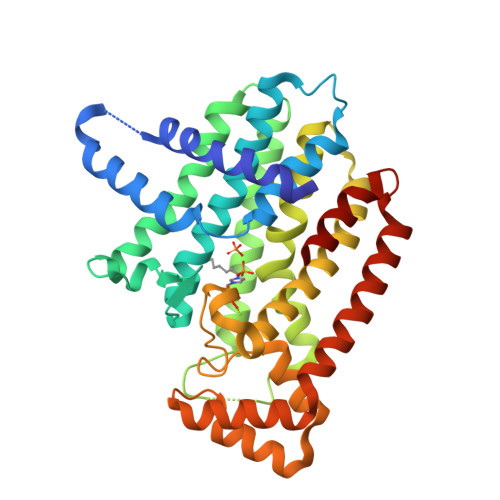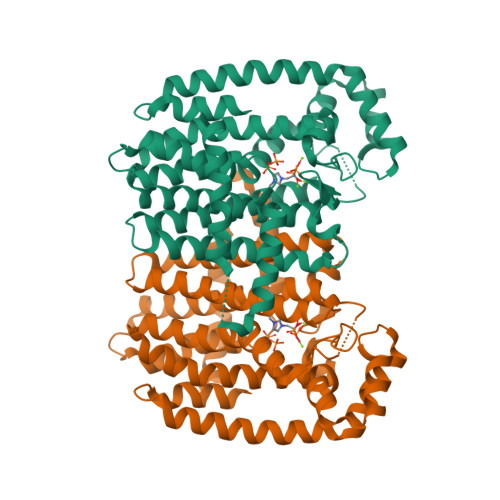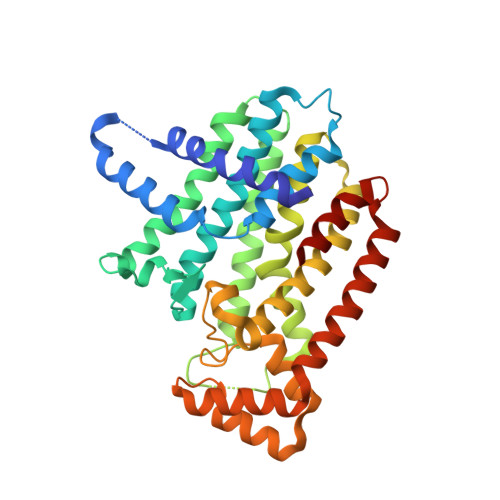A combination therapy for KRAS-driven lung adenocarcinomas using lipophilic bisphosphonates and rapamycin.
Xia, Y., Liu, Y.L., Xie, Y., Zhu, W., Guerra, F., Shen, S., Yeddula, N., Fischer, W., Low, W., Zhou, X., Zhang, Y., Oldfield, E., Verma, I.M.(2014) Sci Transl Med 6: 263ra161-263ra161
- PubMed: 25411474
- DOI: https://doi.org/10.1126/scitranslmed.3010382
- Primary Citation of Related Structures:
4N1Z - PubMed Abstract:
Lung cancer is the most common human malignancy and leads to about one-third of all cancer-related deaths. Lung adenocarcinomas harboring KRAS mutations, in contrast to those with EGFR and EML4-ALK mutations, have not been successfully targeted. We describe a combination therapy for treating these malignancies with two agents: a lipophilic bisphosphonate and rapamycin. This drug combination is much more effective than either agent acting alone in the KRAS G12D-induced mouse lung model. Lipophilic bisphosphonates inhibit both farnesyl and geranylgeranyldiphosphate synthases, effectively blocking prenylation of KRAS and other small G proteins (heterotrimeric GTP-binding protein, heterotrimeric guanine nucleotide-binding proteins) critical for tumor growth and cell survival. Bisphosphonate treatment of cells initiated autophagy but was ultimately unsuccessful and led to p62 accumulation and concomitant nuclear factor κB (NF-κB) activation, resulting in dampened efficacy in vivo. However, we found that rapamycin, in addition to inhibiting the mammalian target of rapamycin (mTOR) pathway, facilitated autophagy and prevented p62 accumulation-induced NF-κB activation and tumor cell proliferation. Overall, these results suggest that using lipophilic bisphosphonates in combination with rapamycin may provide an effective strategy for targeting lung adenocarcinomas harboring KRAS mutations.
Organizational Affiliation:
Laboratory of Genetics, Salk Institute for Biological Studies, La Jolla, CA 92037, USA.





















